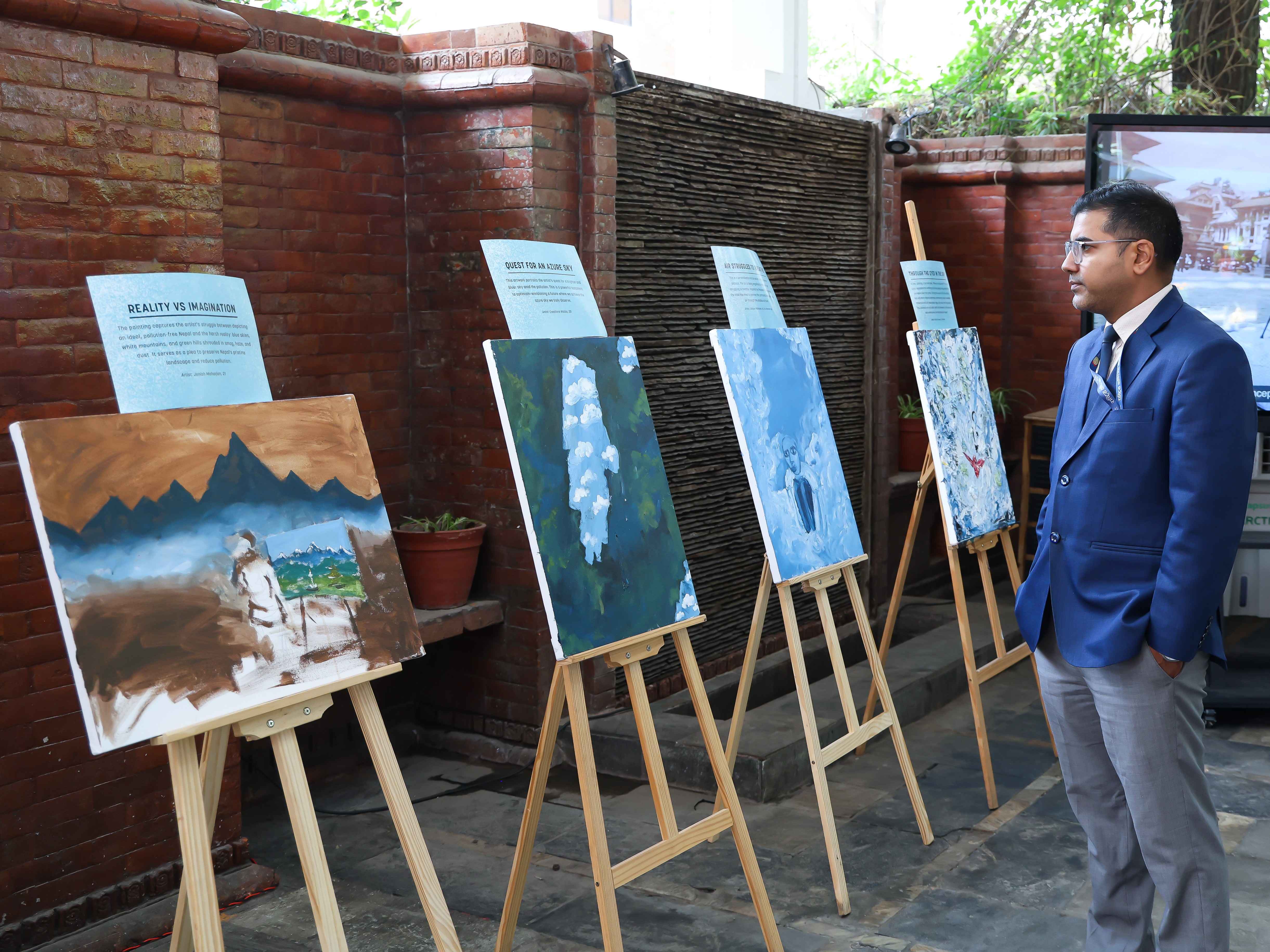A World Bank report reveals that 63% of air pollution in Kathmandu is locally controllable. Without action, levels could rise by 2035. Experts urge urgent reforms in transport, cooking, and governance.

June 17, 2025
Kathmandu, Nepal

Report “Towards Clean Air in Nepal: Benefits, Pollution Sources and Solutions” being unveiled at an event held at Hotel Soaltee, on June 17, 2025, in Kathmandu. Credits: DevPulse
A powerful new report launched by the World Bank (WB) Group today has spotlighted the alarming state of air pollution in Nepal, especially in Kathmandu Valley, and calls it a public health crisis with severe economic and human costs.
The event, titled “Towards Clean Air in Nepal: Benefits, Pollution Sources and Solutions”, was held at Hotel Soaltee and brought together national policymakers, development partners, and experts to highlight that clean air is a fundamental human right.
Delivering the opening remarks, David N. Sislen, Country Director for Maldives, Nepal, and Sri Lanka at the World Bank, stated that more than 90% of Nepal’s population is exposed to polluted air, largely due to local sources.
Citing the WB report reveals that PM 2.5 levels in Kathmandu are seven to eight times higher than safe levels mentioned in the WHO air quality guidelines, cutting average life expectancy by nearly three years and costing the country 6% of its GDP.
Presenting the key findings of the report, Martin Heger, Senior Environmental Economist at the World Bank, emphasized that 63% of air pollution in Kathmandu is generated locally—mainly from vehicles, boilers, and traditional cookstoves—rather than cross-border sources.
“Inspection and monitoring of vehicles is the cheapest and most effective way to reduce pollution,” he noted. Heger warned that without urgent action, air pollution could spike from 37 µg/m³ (2021) to 51 µg/m³ by 2035.
Highlighting the need for better air quality governance and lab infrastructure. He stressed that forest fires spark seasonal debate, but the root problem extends far beyond March–April.
In his special remarks, Ain Bahadur Shahi Thakuri, Minister of Forests and Environment, acknowledged the report and pledged to convert its recommendations into policy action. He referred to Nepal’s pledge in the recently concluded Sagarmatha Sambad and its adoption of the 25-point climate agreement.
Following the unveiling of the report, the session moved towards a panel discussion with representatives from the government, private sector, and civil society discussing practical solutions.
Dr. Rakshya Pandey, a Chronic Obstructive Pulmonary Disease specialist, argued that public concern over air quality only rises when health is in focus. She called for stronger implementation, household-level accountability, and greater involvement from the private healthcare sector.
Karuna Bajracharya, Country representative of the Clean Cooking Alliance, urged for a national program—similar to India’s—to replace traditional stoves and shield women and children from invisible harm.
Birendra Raj Pandey, Senior Vice President of the Confederation of Nepalese Industries (CNI), highlighted gaps in long-term planning, budget, and incentives in tackling vehicle pollution.
Krishna Raj Panth, joint secretary at the Ministry of Physical Infrastructure and Transport, proposed limiting the number of private vehicles and promoting electric mobility, and also acknowledged the need for scrapping 20-year-old cars. However, he also highlighted the implementation gap of the existing policies, citing a lack of national budget, resources, and infrastructure to make the intended and necessary changes.
Concluding the panel, environmentalist and moderator Bhushan Tuladhar framed the path forward in the Five Cs: Crisis, Campaign, Collective Action, Capacity, and Compliance.
Rajendra Prasad Mishra, Secretary of the Ministry of Forests and Environment, closed the event by announcing an NRs. 10 crore investment in clean energy, reaffirming Nepal’s commitment to a cleaner future.
The event also showcased the art pieces of different artists that participated in WB's 'Where's My Blue Sky?' Live Art Challenge, raising awareness and highlighting the urgent need for solutions to air pollution in Nepal.

Photo:

By sharing valuable information and sparking inspiration, we aim to foster growth, innovation and brighter opportunities for future generations.
Contact us